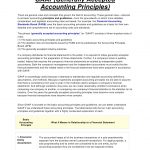
If everything matches, you know your accounts are balanced and accurate. We recommend reconciling your checking, savings, and credit card accounts every month. Connect QuickBooks to your completed contract method definition bank, credit cards, PayPal, Square, and more1 and we’ll import your transactions for you. When you receive your bank statement or account statement at the end of the month, you’ll only spend a minute or two reconciling your accounts.
Step 3: Compare your statement with QuickBooks
By identifying and addressing these discrepancies, businesses uphold the accuracy of their financial reporting and ensure that their records align with the actual financial transactions. This, in turn, supports sound decision-making and fosters trust among stakeholders in the financial statements and accounting practices. This frequency of running reconciliation reports is crucial in managing the sheer volume of daily transactions that businesses deal with.
The QuickBooks reconciliation screen contains a summary of cleared transactions at the top and a detailed list of transactions at the bottom. When you’ve entered all the information from your bank statement, click the green Start reconciling button to continue. Once you’ve got a copy of your bank statement, You will be ready for this next step. Verify that all transactions on your statement have been matched to QuickBooks. Add any transactions that are missing from QuickBooks by clicking the green Finish later button and entering the transactions as normal. After clicking Finish now, QuickBooks will display a confirmation with a link to view the reconciliation report.

A proper reconciliation will allow you to detect these data-entry errors. Failure to reconcile your bank statements may cause data-entry errors to go unnoticed. If data-entry errors are not corrected, then your financial statements will no longer be accurate, which can lead to potential tax consequences. In this guide, we’ll show you how to complete a bank reconciliation in QuickBooks Online, which can help verify that all the activities in your bank account are recorded accurately. To successfully reconcile your transactions against your bank statement, the difference between the ending balance and cleared balance should be zero.
How to get to the QBO bank reconciliation window
- If this is the first time you’re reconciling this account, the beginning balance in QuickBooks will be zero.
- The bank reconciliation report serves as a pivotal tool in maintaining the accuracy and integrity of financial records, playing a fundamental role in the overall accounting process and ensuring the precision of business finances.
- If data-entry errors are not corrected, then your financial statements will no longer be accurate, which can lead to potential tax consequences.
Sign in to QuickBooks and start a discussion in our QuickBooks Community. Since all of your transaction info comes directly from your bank, reconciling should be a breeze. You can see transactions that have come directly from your bank feed, and transactions that you’ve manually added in QuickBooks. To reconcile, simply compare the list of transactions on your bank statement with what’s in QuickBooks.
A tour of the bank reconciliation window in QuickBooks Online
First, try to match total bank deposits to total QuickBooks deposits by reviewing only deposit transactions. Then, match total withdrawals from QuickBooks and the bank statement. Just like balancing your checkbook, you need to review your accounts in QuickBooks activity cost driver definition to make sure they match your bank and credit card statements.
By reconciling these differences, businesses can maintain transaction accuracy and prevent financial misstatements. Remember that transactions that aren’t accounted for in your bank statement won’t be as obvious as bank-only transactions. This is where your accounting software can help you reconcile and keep track of outstanding checks and deposits. Most reconciliation modules allow you to check off outstanding checks and deposits listed on the bank statement. With bank statement in-hand, you can systematically check off matching transactions one-by-one by clicking getting team buy-in for budget season their boxes. The bottom of the screen contains a running total of items you have checked off, and thus have been reconciled.
QuickBooks organizes your data for you, making bank reconciliation easy. Jill and Bob recently handed their books off to their tax accountant, who just happens to know how to use QuickBooks Online (Isn’t that a coincidence?). After a quick glance at their QBO, the accountant, Caroline, asked why they didn’t reconcile their business’ bank accounts. Baffled by this question, Jill and Bob told Caroline that they did reconcile all of their bank accounts. When Caroline reacted with her hand to her forehead and an exasperated sigh, Jill and Bob wondered what they did wrong.
To complete the reconciliation process, you must verify that the difference is zero. If it is, then click the green Finish now button in the upper right-hand corner of the screen, as seen in the sample completed reconciliation below. This is a simple data entry error that occurs when two digits are accidentally reversed (transposed) when posting a transaction. For example, you wrote a check for $32, but you recorded it as $23 in your accounting software. Keeping your financial records in order is hugely important to the success of your business. Read the steps you should take when closing out your small business’ books for the end of the fiscal year.
